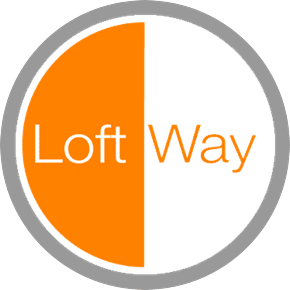I get a lot of calls on my leases from tenants interested in a lease-to-buy arrangement. However, I often get the impression they’re not fully aware of how it works. Hopefully, the information below will help clear things up. I should also mention that in my 20 years in real estate, I’ve only executed one lease-to-buy agreement, and while it worked well for the seller, it wasn’t the best outcome for the buyer.
The desire to own a Loft is a powerful one. It conjures up images of stability, community, and building something personal. But for many, the traditional path to homeownership – saving for a hefty down payment, qualifying for a mortgage – feels daunting, if not impossible.
Enter the intriguing option of lease to buy, also known as rent-to-own. This arrangement offers a potential bridge between renting and owning, allowing you to live in your dream Loft while gradually building equity towards purchasing it. But before you sign on the dotted line, it’s crucial to understand how lease to buy actually works, its advantages and disadvantages, and whether it’s the right fit for you.
The Mechanics of Lease to Buy
A lease-to-buy agreement consists of two parts:
- A traditional lease: This outlines the terms of your tenancy, including rent amount, duration, and maintenance responsibilities.
- An option to purchase: This gives you the right (but not the obligation) to buy the property at a predetermined price within a specific timeframe.
Here’s the twist: a portion of your monthly rent may be credited toward the purchase price. This rent credit essentially acts as a mini down payment, making the eventual purchase more feasible.
Key Components of a Lease-to-Buy Agreement
- Option fee: An upfront payment that secures your right to purchase the property.
- Purchase price: The agreed-upon price you’ll pay if you exercise the option to buy.
- Lease term: The duration of your tenancy, typically ranging from 1 to 3 years.
- Rent credit: The percentage of your rent that goes towards the purchase price.
- Exit clause: The terms under which you can terminate the agreement without penalty.
The Potential Advantages of Lease to Buy
- Lower upfront costs: No down payment is required, making homeownership more accessible.
- Improved credit score: Consistent rent payments can boost your creditworthiness.
- Test-drive the Loft: Live in the property before committing to buying.
- Guaranteed sale: The seller locks in a buyer, providing financial security.
The Potential Disadvantages of Lease to Buy
- Higher overall cost: Total purchase price may be inflated compared to traditional mortgages.
- Lost rent credit: If you don’t purchase, you forfeit the accumulated rent credit.
- Limited market flexibility: You’re locked into buying the specific property.
- Potential repair responsibility: You may be responsible for repairs beyond normal wear and tear.
Is Lease to Buy Right for You?
Carefully consider your financial situation, long-term plans, and risk tolerance before entering a lease-to-buy agreement. It’s ideal for individuals with:
- Limited savings: Struggling to save for a down payment but have a steady income.
- Credit blemishes: Need time to improve their credit score before qualifying for a mortgage.
- Career uncertainty: Not sure where they’ll be in a few years but want stability now.
Remember:
- Consult a real estate professional and financial advisor for personalized guidance.
- Thoroughly review the lease and option to purchase agreements before signing.
- Get an independent property inspection to avoid hidden issues.
Lease to buy can be a valuable tool for achieving homeownership, but it’s not a magic bullet. Approach it with informed eyes, cautious optimism, and a clear understanding of its implications. By doing so, you can pave the way to turning your dream of owning a Loft into a beautiful reality.

